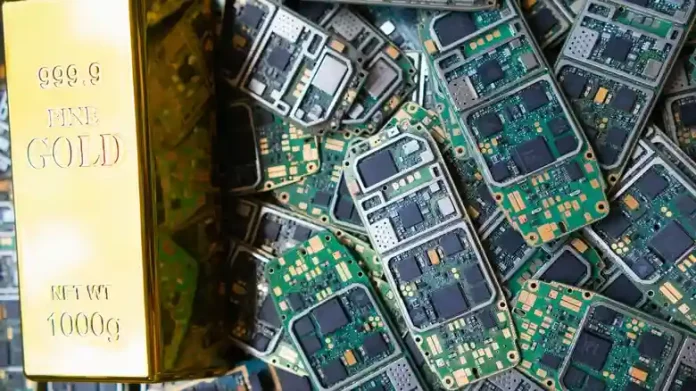You probably encounter precious metals far more often than you think. While scientists are developing new rare-earth-free materials with the help of artificial intelligence, most modern manufacturing still relies heavily on scarce and valuable metals. These materials are essential to powering the devices we use daily—helping conduct electricity, manage heat, and ensure long‑term reliability.
Take your smartphone, for instance. Beneath its sleek exterior lies an intricate network of metals, including copper, cobalt, aluminum, lithium, silver, and—yes—real gold. Gold is prized not just for its shine but for its remarkable properties: exceptional electrical conductivity, resistance to corrosion, and the ability to form solid, reliable bonds between electronic components.
So how much gold is actually hiding inside your phone? On average, about 0.034 grams. That may sound negligible, but when multiplied across the hundreds of millions of smartphones produced globally each year, it adds up. Beyond phones, gold is also found in computers, older televisions, radios, retro gaming consoles, coffee makers, and many small appliances. The circuit board, or motherboard, is the main hub for this metal—its surface often coated or threaded with thin layers of gold or silver to enhance connectivity between components. In larger electronics, like industrial servers, a single board can contain up to a full gram of gold.
How gold powers your devices
The fine gold and silver traces on a motherboard serve as tiny highways for energy and information, linking processors, memory chips, and other components. Gold also appears in connectors and ports—like those on SIM cards, cameras, speakers, and charging pins—where its resistance to corrosion ensures stable electrical contact over years of use. Because devices are sealed tight and expected to last, corrosion resistance becomes a crucial factor, and gold performs that role better than nearly any other metal.
Why recycling matters
All this hidden gold has real value—both economically and environmentally. Recovering it from electronics helps reduce the need for new mining, which can be costly and destructive. Experts estimate that it takes roughly 41 smartphones to reclaim just one gram of gold. That’s why recycling old electronics matters. Even when your old laptop or phone seems obsolete, the materials inside remain precious. So rather than tossing outdated devices into drawers or landfills, consider recycling them through certified e‑waste programs.
And while the dream of turning lead into gold remains one for the alchemists—or modern nuclear physicists—the real magic lies in keeping our finite resources in use. Every recycled phone, circuit board, or gadget brings us closer to a more sustainable tech future.





